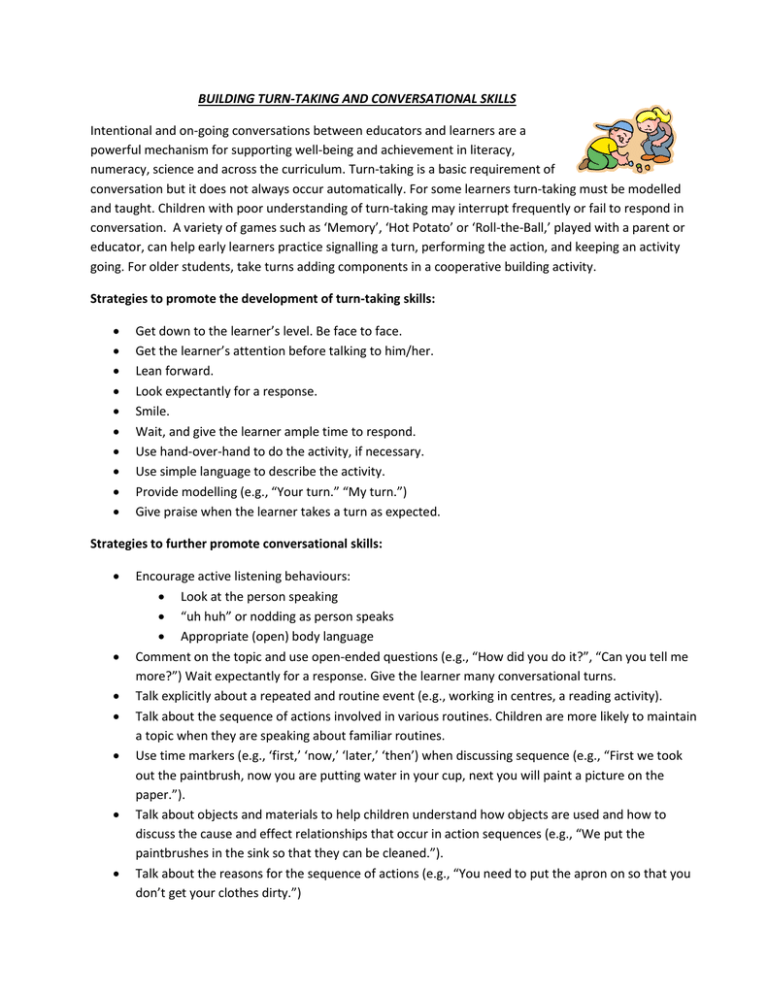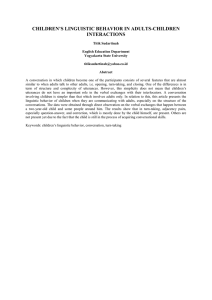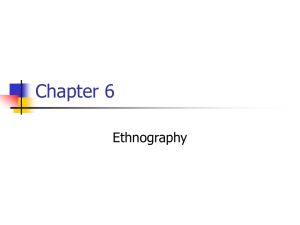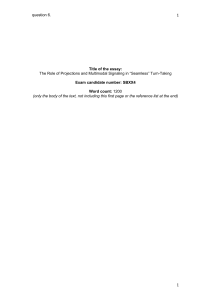BUILDING TURN-TAKING AND CONVERSATIONAL SKILLS
advertisement

BUILDING TURN-TAKING AND CONVERSATIONAL SKILLS Intentional and on-going conversations between educators and learners are a powerful mechanism for supporting well-being and achievement in literacy, numeracy, science and across the curriculum. Turn-taking is a basic requirement of conversation but it does not always occur automatically. For some learners turn-taking must be modelled and taught. Children with poor understanding of turn-taking may interrupt frequently or fail to respond in conversation. A variety of games such as ‘Memory’, ‘Hot Potato’ or ‘Roll-the-Ball,’ played with a parent or educator, can help early learners practice signalling a turn, performing the action, and keeping an activity going. For older students, take turns adding components in a cooperative building activity. Strategies to promote the development of turn-taking skills: Get down to the learner’s level. Be face to face. Get the learner’s attention before talking to him/her. Lean forward. Look expectantly for a response. Smile. Wait, and give the learner ample time to respond. Use hand-over-hand to do the activity, if necessary. Use simple language to describe the activity. Provide modelling (e.g., “Your turn.” “My turn.”) Give praise when the learner takes a turn as expected. Strategies to further promote conversational skills: Encourage active listening behaviours: Look at the person speaking “uh huh” or nodding as person speaks Appropriate (open) body language Comment on the topic and use open-ended questions (e.g., “How did you do it?”, “Can you tell me more?”) Wait expectantly for a response. Give the learner many conversational turns. Talk explicitly about a repeated and routine event (e.g., working in centres, a reading activity). Talk about the sequence of actions involved in various routines. Children are more likely to maintain a topic when they are speaking about familiar routines. Use time markers (e.g., ‘first,’ ‘now,’ ‘later,’ ‘then’) when discussing sequence (e.g., “First we took out the paintbrush, now you are putting water in your cup, next you will paint a picture on the paper.”). Talk about objects and materials to help children understand how objects are used and how to discuss the cause and effect relationships that occur in action sequences (e.g., “We put the paintbrushes in the sink so that they can be cleaned.”). Talk about the reasons for the sequence of actions (e.g., “You need to put the apron on so that you don’t get your clothes dirty.”)






